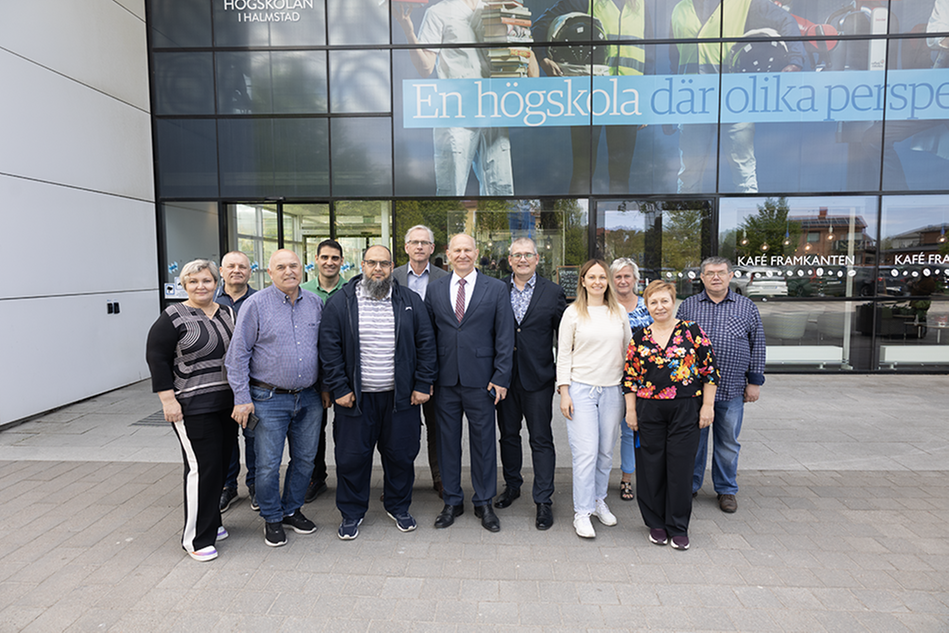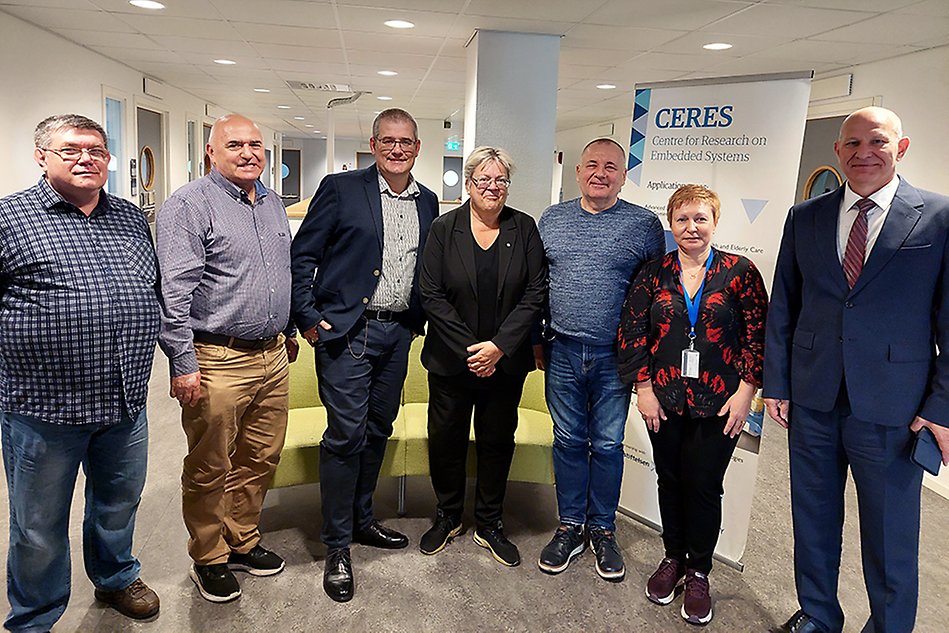International project highlights the growing risk of AI-generated cyber threats
As artificial intelligence (AI) continues to evolve, so does the risk of misusing AI. An international research initiative, led by Halmstad University and funded by the Swedish Institute, is addressing one of today’s most pressing digital challenges: AI-generated cyber threats. Earlier this month, researchers, educators and industry partners from Sweden, Ukraine and Poland gathered in Halmstad for a two-day workshop focused on just that, AI-generated threats.
The project, AI cyber threats – raising awareness of AI-generated cyber threats, aims to deepen understanding of how AI is reshaping the cybersecurity landscape. By combining research, education and international collaboration, the project supports the development of strategies to identify and counteract risks with AI.
The project brings together researchers and experts from Sweden, Ukraine and Poland. In addition to Halmstad University, key partners include Ivan Franko National University of Lviv, Ukraine, and the University of the National Education Commission in Krakow, Poland. This growing network provides a valuable platform for shared learning and innovation in a rapidly changing field.
“This seed project is a collaboration aimed at advancing future initiatives in AI security. Its primary goal is to generate new ideas and serve as a foundation for interdisciplinary training modules and research”, explained Olga Torstensson, Project Leader and Lecturer at Halmstad University.

The project brings together researchers and experts from Sweden, Ukraine and Poland.
Building long-term collaborations
Over two days, participants explored current challenges and future opportunities related to AI-generated cyber threats through keynote lectures and student presentations that helped spark dialogue with industry partners.
Lena Johansson from Siemens Sweden talked about the role of cybersecurity in AI-driven industrial ecosystems, highlighting the critical importance of digital trust and preparedness in industrial environments, while Michael Kropyva from tech company SoftServe delivered a session titled “Generative AI: Opportunities and risks”, offering an industry perspective on how generative AI is shaping both innovation and security threats.
These industry presentations were followed by two students from the Bachelor’s Programme in IT Forensics and Information Security at Halmstad University, Filip Stenfors and Christiane Brüggemann, who shared their thesis “Get out of jail free prompt: How jailbreaking compromises safety in large language models”, illustrating current vulnerabilities in AI systems.
Cybersecurity a priority
Cybersecurity is a priority area for Halmstad University, which is also part of Cybercampus Sweden – a national initiative aimed at strengthening research and education in cybersecurity. Susanna Öhman, Vice-Chancellor of Halmstad University, also met with the project group to discuss opportunities for future collaboration.
“To address current and future threats, it is crucial to collaborate both nationally and internationally, not least with Ukraine, which has particular experience and expertise in the field. Crisis management is a central part of cybersecurity efforts, and exchanges on methods, preparedness and resilience are important for strengthening both civil and public defence”, says Susanna Öhman.

Vice-Chancellor Susanna Öhman (in the centre) met with the project group to discuss opportunities for future collaboration.
Bridging the gap between research and practical application
The year-long project will now identify three core research areas related to AI-generated cyber threats. The aim is to bridge the gap between cutting-edge research and practical application, ensuring that students, educators, policymakers and industry professionals are better equipped to meet the challenges ahead.
“I see great potential in collaborating with Halmstad University – exchanging ideas and exercises between our universities is highly valuable”, said Oleg Gutik, Senior Lecturer at the Department of Cybersecurity at Ivan Franko National University in Lviv.
Professor Sergii Semenov, Head of the Department of Cybersecurity at the University of the National Education Commission in Krakow, agreed: “Our university places significant emphasis on international collaboration in our work with cybersecurity and informatics.”
“Together, we can strengthen our capabilities and learn from one another”, concluded Olga Torstensson.
Text: Emma Swahn
Photo: Emma Swahn, Olga Torstensson
About the project
The project AI cyber threats – raising awareness of AI-generated cyber threats runs until the end of 2025 and aims to identify three key research areas, with the ambition of integrating these into both academic training and ongoing innovation initiatives. It is a seed project – a small, early-stage initiative which focuses on exploring new or deepening existing collaborations and gathering data to be able to prepare applications for future projects. The project is funded by the Swedish Institute through the Baltic Sea Neighbourhood Programme and is part of the research programme Future Industry at Halmstad University.
Project participants
Halmstad University
- Olga Torstensson, Project Leader and Lecturer
- Mahmoud Rahat, Senior Lecturer
Ivan Franko National University of Lviv, Ukraine:
- Petro Venherskyi, Professor, Head of the Department of Cybersecurity
- Yaryna Kokovska, Docent
- Oleg Gutik, Docent
University of the National Education Commission in Krakow, Poland:
- Sergii Semenov, Professor, Head of the Department of Cybersecurity
- Oleksandr Korchenko, Professor

